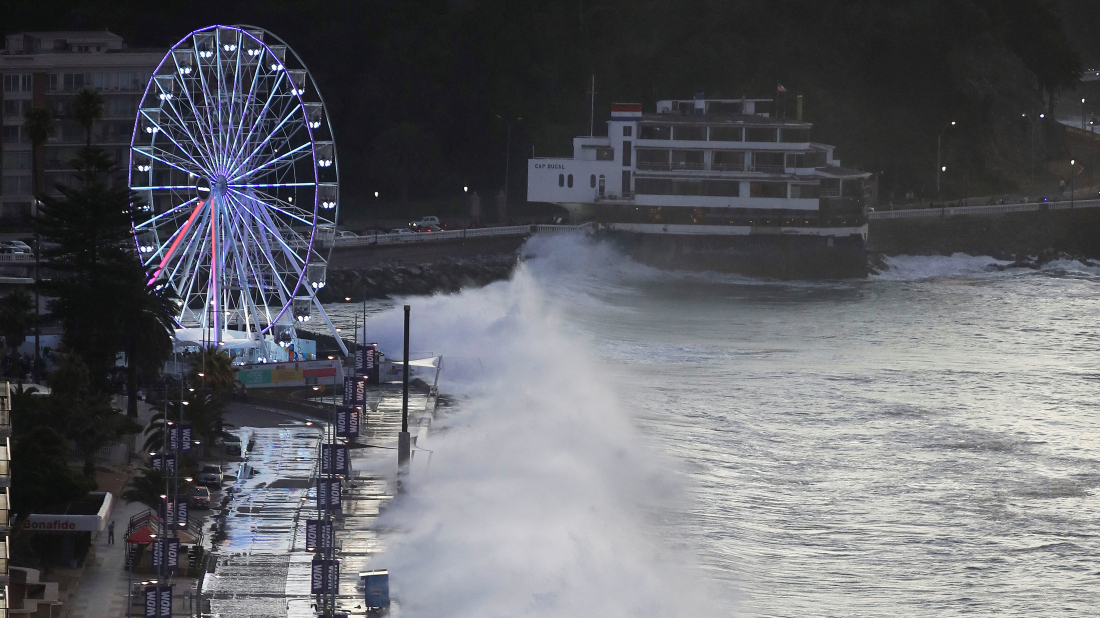Is Russia preparing a Belarus base for nuclear-capable Oreshnik missiles?
Russia is likely preparing to station its new nuclear-capable Oreshnik hypersonic ballistic missiles at a former airbase in eastern Belarus, a move th...

Scientists have discovered previously unknown communities of deep-sea creatures that survive by converting chemicals into energy, rather than feeding on organic matter, during dives into two of the Pacific Ocean’s deepest trenches.
The findings, made using a crewed submersible in the Kuril-Kamchatka and Aleutian trenches, revealed thriving chemosynthetic ecosystems — dominated by tube worms and clams — at depths reaching 9,533 metres, nearly 25% deeper than such life had ever been documented.
The ecosystems rely on fluids rich in hydrogen sulphide and methane seeping from the seafloor — a process known as chemosynthesis — rather than sunlight or organic debris from the ocean’s surface.
“Previously, people all believed the fauna at the bottom of the trench needed to rely on organic matter sinking from the surface of the ocean, or the dead bodies from the surface ocean,” said Mengran Du, Deputy Director of the Deep Sea Science Research Department at the Institute of Deep-sea Science and Engineering (IDSSE).
“But our discovery suggests there are some other types of fauna, which is chemosynthetic life. They do not necessarily need to rely on the surface ocean, but they can use the local inorganic carbon locally in the sediments. They can feed themselves.”
The research, published on 30 July in the journal Nature, was carried out by IDSSE, part of the Chinese Academy of Sciences. The team conducted a series of dives and nighttime operations at sea, capturing footage of marine life, deploying the submersible, and collecting data.
Du said she was astonished by the find.
“The first discovery of chemo life (chemosynthetic life) at the bottom — the first impression in my mind was ‘I don’t believe it,’ but after several minutes, I talked to myself and realized this is a new type of silent cold seep. My feeling in my mind is like, ‘dreams come true.’”
She added that such organisms could offer insights into biochemical processes useful for humans.
“The tricks, the tricks of how this life adapts to those extreme environments — they must have some special way, like how they adapt to the super high pressure,” Du said.
“They have a very special tool for doing anti-oxidation, so if we can learn from this anti-oxidation process, maybe that’s how we can benefit from the knowledge of new forms of life.”
The deepest discovery was made in the Kuril-Kamchatka Trench, at a depth greater than the height of Mount Everest — Earth’s tallest peak.
The findings expand scientific understanding of biodiversity and survival mechanisms in extreme environments.
Du recalled her reaction during the dive.
“The discovery made me quite excited when I was within the submersible,” she said. “And actually, the direct feeling within the sub was — when I saw these unexpected creatures, I really wanted to go out of the submersible and catch them with my hand, even though it’s not possible, at least in recent years.”
The IDSSE team celebrated the successful mission with crew members cheering as their vessel returned from the depths.
In 2025, Ukraine lived two parallel realities: one of diplomacy filled with staged optimism, and another shaped by a war that showed no sign of letting up.
It’s been a year since an Azerbaijan Airlines plane crashed near Aktau, Kazakhstan, killing 38 people. Relatives and loved ones mourn the victims, as authorities near the final stage of their investigation.
Polish fighter jets on Thursday intercepted a Russian reconnaissance aircraft flying near Poland’s airspace over the Baltic Sea and escorted it away from their area of responsibility.
The United States carried out a strike against Islamic State militants in northwest Nigeria at the request of Nigeria's government, President Donald Trump and the U.S. military said on Thursday.
President Volodymyr Zelenskyy has said he will meet U.S. President Donald Trump on Sunday to discuss territory and security guarantees, as diplomatic efforts intensify to end Russia’s war in Ukraine.
China’s core artificial intelligence (AI) industry is projected to surpass 1.2 trillion yuan in 2025 (about $170 billion), up from more than 900 billion yuan in 2024, according to a new industry assessment.
Time Magazine has chosen the creators behind artificial intelligence as its 2025 Person of the Year, highlighting the technology’s sweeping impact on global business, politics and daily life.
Children are forming new patterns of trust and attachment with artificial intelligence (AI) companions, entering a world where digital partners shape their play, their confidence and the conversations they no longer share with adults.
The International Robot Exhibition (IREX) opened in Tokyo on 3 December, bringing together visitors to explore robotics applications for industry, healthcare, logistics, and everyday life.
A bipartisan group of U.S. senators, including prominent Republican China hawk Tom Cotton, introduced the SAFE CHIPS Act on Thursday, aiming to prevent the Trump administration from easing restrictions on China’s access to advanced artificial intelligence (AI) chips for a period of 2.5 years.
You can download the AnewZ application from Play Store and the App Store.

What is your opinion on this topic?
Leave the first comment